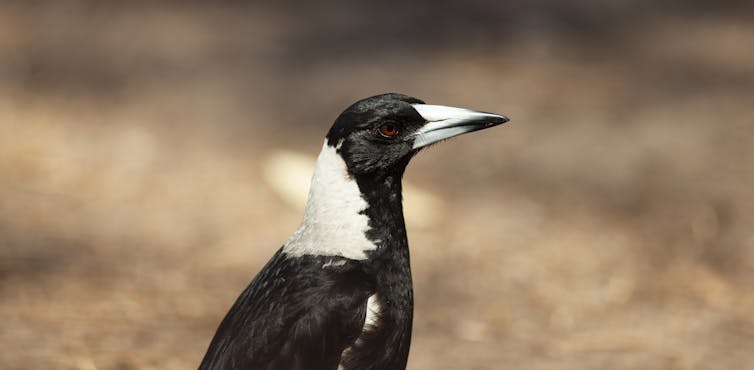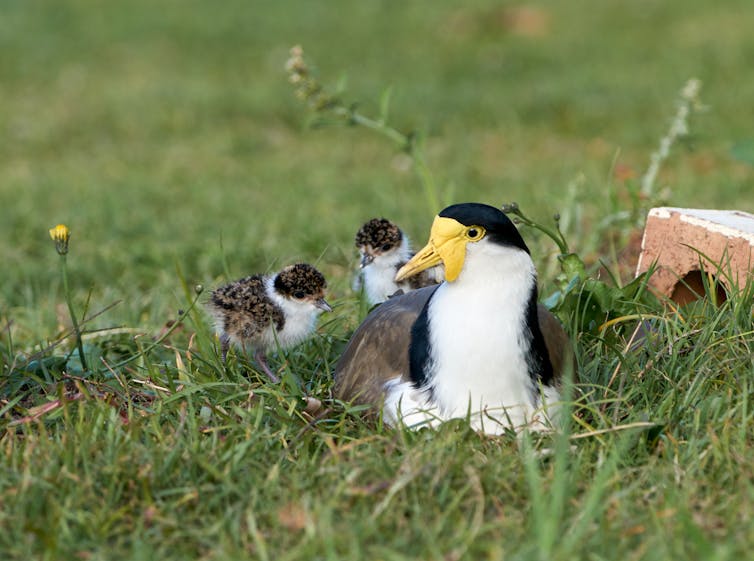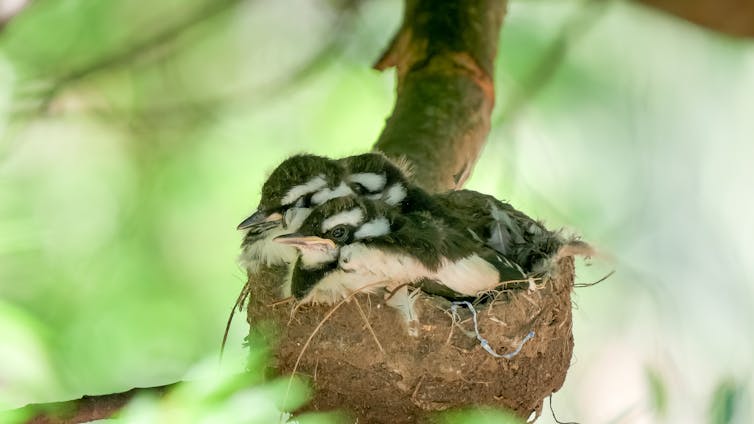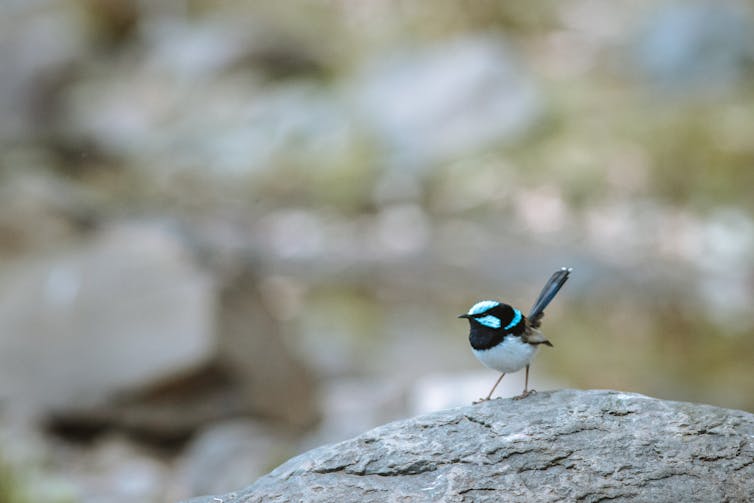If you live in Australia or New Zealand, the arrival of spring is a different kind of blessing. The days are getting warmer. Flowers are blooming. bird’s nest
It is this last change that can be problematic. Nesting makes male birds of species such as magpies, magpies and masked grebes (also known as night owls) territorial and protective – and willing to dive and bomb humans.
One species is notorious – the Australian magpie. This iconic black and white songbird is a familiar sight in major cities and towns in Australia and New Zealand, having been introduced to New Zealand in the 19th century, where it is now common. A magpie’s strong beak and powerful wings can strike fear into pedestrians, runners, and cyclists.
This year, the invasion started earlier. More than 450 incidents were recorded on Magpie Alert before the official start of spring. Most sudden events cause fear but not injury. Actual injuries occur 10-15% of the time. While some injuries are caused by claws or beaks, many injuries occur when we try to escape and fall to the ground. Rarely, running can cause more serious injuries or even death.

Abby Denin, Author provided (no reuse)
What is behind the aggressive behavior?
When a magpie attacks you, it is defending its nest and chicks. Sees you as a potential threat.
Australian magpies begin their breeding season in winter. They build basket-like nests of sticks and twigs, which they line with soft materials such as grass and hair. The peak breeding season is between August and November when the eggs and chicks are in the nest. These four months are when swooping increases.
The good news is that the rutting season is usually only intense for a few weeks while the chicks are most vulnerable in the nest, which is usually between August and October.
Speeding cyclists are seen as a particular threat by these birds. Data from MagpieAlert, a public database of attacks, shows that cyclists are the number one target. But humans have not been spared – magpies can keep other birds fit to defend their territory and nest sites, or protect their young from birds of prey, cats or foxes.
Generally, male magpies make a warning move when they perceive danger. If ignored, they can move a second or third time. This is often combined with their alarm bells and beak claps to make warning sounds.

Jude Black/Shutterstock
Only about 10 percent of nesting magpies actually kill humans. But if you’ve been attacked before, you’re more likely to be attacked again. Magpies can recognize and remember human faces, and they see the same people year after year.
Magentas tend to move upwards. But magpies — the unrelated black-and-white bird also known as the bugger or mudlark — can actually do more damage. When they go, they come from the front and can follow the eye.
Other birds on the move in Australia include noisy miners – small gray and yellow native birds that are common in urban areas. These aggressive honeyeaters act as a group to eliminate threats – which could include us. They can also take food from unsuspecting picnickers. Then there are masked wings that nest on the ground and can move if you get too close.

crbellette/Shutterstock
Birds are moving around the world
While the Australian magpie is internationally renowned, it is not the only infamous species.
In North America, red-winged blackbirds fly during their breeding season, while American crows can be very territorial in the spring. If you anger an American crow, the highly intelligent bird will remember your face—and can pass its grudge on to the next generation.
While the seagulls can move around the world, they don’t do it to drive you, they do it to steal your hot chips.
The Australian magpie was named after the Eurasian magpie because of their similar black and white coloring. But the Eurasian magpie, although it is related to crows, does not move. The Australian magpie is not a member of the crow family – its closest relatives are butcher birds – songbirds with strong beaks.
The importance of songbirds
Apart from gulls and masked wings, these wading species have one thing in common – they are songbirds, which means they belong to this order. passersby. This is not surprising given the songs, calls and songs of this Australian magpie.
Songbirds make up about half of the world’s bird species. This very impressive group of birds actually evolved in Australia.
This group of birds is very diverse, from tiny fairies to larger insects such as crows. They play a fundamental ecological role in our natural world, acting to disperse seeds, clean up dead organisms by scavenging, help pollinate plants, eat insects and pests, and return nutrients to plants through their feces.

Author provided
Be alert, not worried
If you are tired of drowning, choose another route for a few weeks until the chicks leave the nest.
Magpies often nest in the same area every year, so avoid that route if you’ve been attacked before.
Protective gear like sunglasses and a hat can help you avoid injury. Wearing sunglasses on the back of the head or attaching artificial eyes to the back of a cap or hat can help, as magpies don’t like to look at them when bending over.
If you are unlucky enough to be drowned, try not to run away or scream as it may make you seem like a bigger threat. Instead, get out of the bird’s territory as soon as possible.
This spring, be on the lookout for the beautiful calls of our songbirds—and be on the lookout for our overprotective avian friends.
#magpies #magpies #magpies #spring